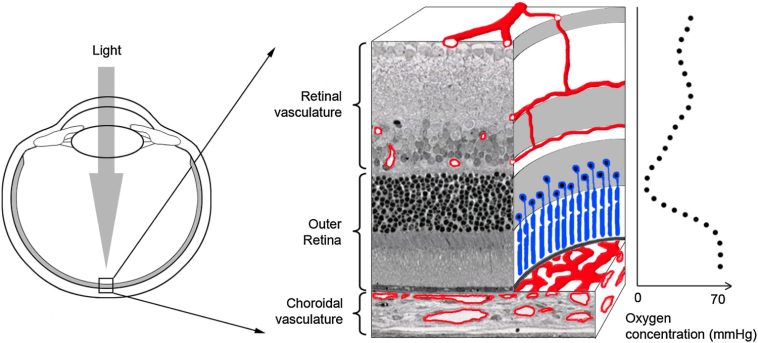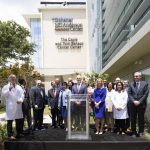
Identifying Genetic Mechanisms to Regulate Blood Vessel Growth for the Treatment of Retinal Vascular Disease
A Northwestern Medicine study published in Nature Communications has identified novel genetic mechanisms that may help regulate blood vessel growth in the retina and serve as therapeutic targets for retinal vascular disease. The research is led by Tsutomu Kume, PhD, Professor of Medicine in the Division of Cardiology and of Pharmacology.
Understanding Angiogenesis and Genetic Mechanisms
Angiogenesis is the formation of new blood vessels from existing blood vessels’ endothelial cells. It is a crucial process for the development of new organ systems and promotes tissue repair. While molecular mechanisms of angiogenesis have already been established, genetic mechanisms are not well-understood. Researchers studied genetic mechanisms associated with FOXC1 and FOXC2 genes mutations and various vascular developmental defects.
Role of FOXC1 and FOXC2 in Regulating Retinal Angiogenesis
Researchers studied retinal tissue from vascular endothelial cell-specific FOXC- knockout mouse lines to determine the role of FOXC1 and FOXC2 in transcriptional regulation of retinal angiogenesis. FOXC1 and FOXC2 are key transcriptional regulators for blood vessel growth and the development of the retinal vasculature. Therefore, FOXC1 and FOXC2 serve as essential targets for the treatment of retinal vascular diseases.
Impaired Gene Expression Leads to Retinal Vascular Growth in Mice with FOXC1-Knockout
Mice with FOXC1-knockout demonstrated impaired retinal vascular growth with an insufficient expression of the SLC3As and SLC7A5 genes encoding CD98, an essential amino acid transporter. This impaired gene expression inhibited the activation of the mammalian target of rapamycin (mTOR) signaling pathway, which is essential for cellular growth and proliferation.
FOXC1 is Crucial for Revascularization of the Retina
Using the oxygen-induced retinopathy mouse model, researchers also found that FOXC1 is necessary for revascularization of the retina during oxygen-induced retinopathy. This model produces retinopathy of prematurity, which is a significant cause of acquired blindness in children. Thus, FOXC1 is also crucial for the pathological retinal angiogenesis.
FOXC1 Maintenance of Pericytes
Pericytes are cells that help form the walls of blood vessels and support the blood-retinal barrier during retinal angiogenesis. FOXC1 is crucial for the maintenance of pericytes, which are critical in eye diseases like diabetic retinopathy. During disease progression, blood vessels are damaged, the pericytes are lost, and eventually, the blood vessels become leaky. Hence, new therapeutic strategies for treating retinal vascular disease must focus on FOXC1 as a crucial transcriptional regulator.
Conclusion
The study highlights the need for finding new therapeutic targets for diabetic retinopathy and other ischemic retinopathies. This study is a step towards better treatment for retinal vascular diseases. A follow-up investigation is required to understand the sight-threatening retinal diseases’ underlying mechanism and identify new therapeutic targets for treating these diseases.
Key takeaways
- Angiogenesis is the formation of new blood vessels from existing blood vessels’ endothelial cells
- FOXC1 and FOXC2 serve as essential genetic targets for the treatment of retinal vascular diseases.
- Mice with the FOXC1-knockout demonstrated impaired retinal vascular growth and insufficient expression of the SLC3As and SLC7A5 genes encoding CD98.
- FOXC1 is necessary for revascularization of the retina, especially in pathological retinal angiogenesis.
- FOXC1 is crucial for the maintenance of pericytes and supports the blood-retinal barrier during retinal angiogenesis.
- The study highlights the need for new therapeutic targets to treat diabetic retinopathy and other ischemic retinopathies.
Keywords
retinal vascular disease, angiogenesis, FOXC1, FOXC2, retinal tissue, endothelial cells, genetic mechanisms, blood vessel growth.
Originally Post From https://news.feinberg.northwestern.edu/2024/06/10/genetic-mechanisms-may-reveal-retinal-vascular-disease-therapeutic-targets/
Read more about this topic at
Ocular angiogenesis: mechanisms and recent advances in …
Mechanisms of retinal angiogenesis


